Chris Hedges's Blog, page 84
December 9, 2019
Grief Over Climate Hits More of Us Each Day
Recently, I was in Homer, Alaska, to talk about my book The End of Ice. Seconds after I had thanked those who brought me to the small University of Alaska campus there, overwhelmed with some mix of sadness, love, and grief about my adopted state — and the planet generally — I wept.
I tried to speak but could only apologize and take a few moments to collect myself. It’s challenging for me, even now, to explain the wash of emotions and thoughts that suddenly swept over me as I stood at that podium on a warm, windy, rainy night on the southern Kenai Peninsula among a group ready to learn more about what was happening to our beloved Earth.
“Sorry for that,” I finally said after a few more breaths, as my voice cracked with emotion, “but I know you’ll understand. You live in this state and you know as well as I do that once Alaska gets in your blood, it stays there. And I love this place with all my heart.” Most of the listeners in that room were already nodding and at least one person had begun to cry.
Related Articles

The Climate Crisis Is Coming for Your Food
by Juan Cole
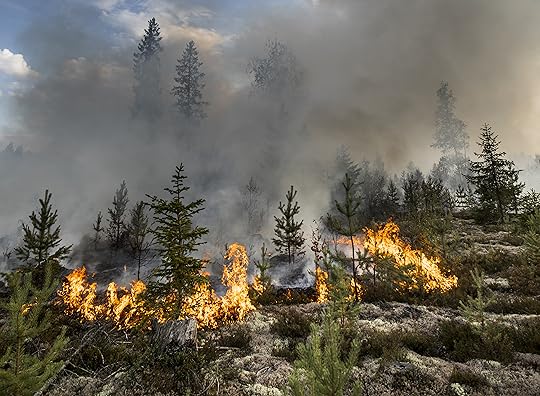
Climate Change Is Already Hitting Europe Harder Than Anyone Expected
by

The Center Cannot Hold Off Climate Catastrophe
by Robert Scheer
I lived in Alaska for a decade, starting in 1996, and it’s been in my blood since the year before that when I first laid eyes on Denali National Park and the spectacular Alaska Range. In fact, five of the nine chapters of my new book are set in Alaska and its mournful title is a kind of bow to my abiding love for this country’s northernmost state. That moment in 1995 when the clouds literally parted to reveal Denali’s lofty summit and its spectacular spread of glaciers proved to be love at first sight. In fact, most summers thereafter I would visit that range as well as others in Alaska, volcanoes in Mexico, the Karakorum Himalaya of South Asia, or the South American Andes.
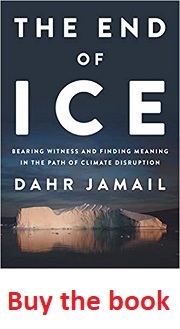 Then, in the summer of 2003, several months after the Bush administration’s invasion of Iraq, I listened to radio reports on the beginning of the grim American occupation of that land from a tent on Denali while volunteering with the Park Service. It was there as well, strangely enough, that I first felt the pull of Iraq — or rather of the gaping void in the mainstream media when it came to what that occupation was doing to the Iraqi people. I then decided to travel from ice to heat, from Denali to the Middle East, to find out what was happening there and report on it.
Then, in the summer of 2003, several months after the Bush administration’s invasion of Iraq, I listened to radio reports on the beginning of the grim American occupation of that land from a tent on Denali while volunteering with the Park Service. It was there as well, strangely enough, that I first felt the pull of Iraq — or rather of the gaping void in the mainstream media when it came to what that occupation was doing to the Iraqi people. I then decided to travel from ice to heat, from Denali to the Middle East, to find out what was happening there and report on it.
That strange mountainside call led me into a career in journalism that pulled me away from my beloved Alaska whose vastnesses, largely devoid of a human presence, I’ve never experienced elsewhere. And as far as I traveled from its unique landscape, the feeling that the climate was already being disrupted in dramatic ways there stuck with me through my years of war reporting. The thought of the ever-receding glaciers in my former home state pained me and somehow drew me from America’s forever wars to another kind of war — on the planet itself — and into nearly a decade of climate reporting.
I told the audience all of this, occasionally pausing so as not to cry again thanks to a sadness born in part from the convulsions of wildfires, droughts, rapidly thawing permafrost, native coastal villages melting into the seas, and fast-shrinking glaciers. And don’t forget a Trumpian lapdog of a governor who, just like his darling president, seems unable to cut services fast enough or work hard enough to open yet more of this great state to drilling, logging, and pollution (despite his growing unpopularity).
The evening before, November 20th, I’d spoken at the University of Alaska in Anchorage and it was 48 degrees Fahrenheit (and raining, not snowing), a full 20 degrees warmer than the normal high temperature for that month. And that’s a reality that has become ever more the new normal there, even though the top third of the state lies inside the Arctic Circle. That, in turn, reflects another new reality: “Arctic amplification,” which means that the higher latitudes of this planet are warming roughly twice as fast as the mid-latitudes. In other words, Alaska is in the crosshairs of climate disruption.
Put another way, the audiences I was speaking to that month and all of my friends in Alaska are now living in what feels like a chronic state of shock as things unravel in their state at warp speed.
Alaska, the New Norm
It’s no secret that vast numbers of climate scientists are now grieving for the planet and humanity’s future, with some even describing their symptoms as a climate-change version of Post-Traumatic Stress Disorder, or PTSD. Several of the scientists I interviewed for my book said as much. Dan Fagre, who works for the United States Geological Survey at Glacier National Park, was typical. When I asked him what he felt like while watching the glaciers (for which that park was named) disappear — they are expected by 2030 — he responded, “It’s like being a battle-hardened soldier, but on a philosophical basis, it’s tough to watch the thing you study disappear.”
And it’s not just climate scientists like him. Others living near areas where the changes are happening most dramatically seem to be experiencing such symptoms as well. “You wouldn’t believe what it was like to be in Anchorage last summer,” my friend Matt Rafferty told me when we met in that city on the morning I returned from Homer. “We saw 90 degrees on July 4th and then, later in the summer, the wildfire smoke was so thick on some days you literally could not see across the street downtown.”
An environmentalist who has long been working to protect Alaska from the extraction vultures, Matt is, like me, in love with the natural beauty of the place. I’ve traveled with him to the remote Alaskan backcountry and think of him as upbeat and indefatigable when it comes to his work, whatever the odds of success. But listening to him describe the climate convulsions wracking his home state recently, I couldn’t help but think of interviews I had done with family members in Iraq who had lost loved ones to U.S. military attacks. People with PTSD — and I know this from my own personal experience with it — tend to repetitively tell stories about the trauma they’ve experienced. It’s our way of trying to process it.
And this was exactly what Matt, normally not a guy given to overemphasis, was doing that morning, which shocked me. “We had rivers in south-central Alaska that were so warm the salmon were dying of heart attacks,” he continued, barely stopping to take a breath. “The river water reached 80 degrees in some of them! The water was 80 degrees! Can you believe that? There were literally tens of thousands of dead salmon floating belly up in many of the rivers. I did a pack-raft trip in the Talkeetna Mountains wearing nothing but a t-shirt and shorts! That is absurd! You know how cold the water usually is in the rivers here. It literally got so hot in the sun we had to pull out and sit underneath a tree in the shade!”
He recounted much that I already knew, including that Arctic sea ice had melted away at record speed and that, by the fall, permafrost was thawing at rates not predicted for another 70 years. On the coast of the Arctic Ocean in northern Alaska, whaling towns that traditionally used permafrost cellars to store, age, and keep their subsistence food cool throughout the year — the Inupiat use them for tons of whale and walrus meat — now find them pooling with water and sprouting mold thanks to the thawing permafrost.
By that September, Matt told me, he was struggling with depression. “I lost all hope, as it truly felt apocalyptic here,” he continued more slowly and quietly now, rubbing one of his arms in what I imagined was a sort of self-consoling gesture. Spending more time meditating, doing yoga, and finding helpful spiritual podcasts has, he added, become mandatory for him — and he’s far from alone in that among Alaskans as southern weather is visibly migrating north.
That day in Anchorage, I stopped at my favorite bookstore to check out the latest volumes on the state. One of them, Alone at the Top: Climbing Denali in the Dead of Winter, caught my eye. Arctic explorer Lonnie Dupre had made history in 2015 by summiting Denali in January… solo. It was an incredible feat that he writes about in his book, but the moment I won’t forget was when he described being trapped in his tent on that mountain at 11,200 feet during a storm that raged for days. At one point, he heard what sounded like small rocks pelting the tent, unzipped the door, poked his head out, and was shocked to find that, on December 31st, it was sleeting, not snowing. We’re talking about a moment when the average temperature for that elevation should have been something like 35 degrees below zero.
It hurt my heart to know that such weather paroxysms were afflicting even Denali, a mountain, standing so high and so near the Arctic Circle, that changed my life by drawing me to Alaska when I was in my twenties. Despite everything I now know, it still stunned me.
And here I am, like my close friends in that state, telling this story to anyone who will listen. I know this will sound over the top to non-Alaskan readers, but even writing this brings tears to my eyes. It’s simply not supposed to be this way. Just about nothing that’s happening there, climatologically speaking, today is what we once would have thought of as “natural,” even though it’s now the new norm.
Hearing so many of these stories while visiting proved too much to take in, as did knowing what’s now starting to happen to salmon, bears, moose, and other wildlife of all sorts. Thanks to chaotic climatic shifts, such creatures are beginning to migrate from what once were their home territories due to lack of familiar food. And all of it is, in its own way, traumatizing.
During a recent lecture at the University of Alaska, Anchorage, Rick Thoman, a climate specialist at the Alaska Center for Climate Assessment and Policy, presented a grim overview of radically changed conditions across our northernmost state. In his 30 years with the National Weather Service in Alaska, Thoman has watched as the climate in his home state was disrupted by the anthropogenic climate crisis. Originally from Pennsylvania, he told the audience how reading about such a different world in works that ranged from Jack London’s turn-of-the-twentieth-century short story “To Build a Fire” to Barry Lopez’s book Arctic Dreams had led him to Alaska. London, for instance, had written about a place in which minus 70 degree temperatures were part of everyday life. “But the fact of the matter is,” he told us grimly, “the environment described in these books doesn’t exist anymore.” He added, “That’s really hard. But it’s what we’ve got, it’s what we live in.”
Thoman spoke of how, thanks to radically warming waters, the Bering Sea is literally experiencing a mass exodus of marine life, while the state itself is, like a beloved friend, in the midst of a health crisis that no one in power is truly trying to treat.
No wonder all of this leaves me with a feeling of utter impotence. Each new weather shock feels like another body blow. Or yet further evidence of how I’m losing a loved one. Alaska, in other words, is suffering climate death by a thousand cuts, while I struggle daily to accept the new reality: that the state is already irreparably changed.
Rainbow Peak
Deep waves of love and sadness had already begun coursing through me as my flight descended into Anchorage when this trip began. And such feelings only continued during the time I spent there. Time with old climbing buddies proved bittersweet, as it was never long before we couldn’t help but speak of the changes already occurring, even as we planned future forays into Alaska’s mountains.
The last full day, I knew I needed to be alone in those mountains. I’d brought the necessary gear with me for late-November hiking temperatures, or at least for the way I remembered them from the years when I lived there: crampons, an ice axe, extra layers of warm clothing for deep snow and mountain temperatures that should have been in the teens (even without taking the wind-chill factor into account).
Before sunrise that day, I headed south from Anchorage on the Seward highway as it dropped down beside the waters of Turnagain Arm. I was heading for a trail that would take me into the Chugach Mountains, one of my old stomping grounds.
Delicate pastel blues and soft buttery yellows illuminated the sky ahead as the lazy winter sun rose. While snow still covered the tops of the surrounding mountains, lower down the colors on them faded from bright whites to browns and greens — hardly a surprise, since temperatures here have been so warm and snow so scarce in this year’s disrupted lead-up to winter.
I passed several areas where, in the mid-1990s, I would already have been ice-climbing atop frozen waterfalls at this time of year. Now, they were visibly bone dry with temperatures too warm for ice to form.
After arriving at my trailhead, I hiked alone toward a nearby peak. Out of habit, I began with a heavy jacket on, but soon removed it, along with my gloves, in temperatures well above freezing. I wasn’t used to this and it felt abidingly strange to alter my old habits as I climbed.
I gained elevation quickly. Within a couple of hours, I was in something that finally seemed Alaskan to me, genuine winter conditions as I post-holed through the snow — which means having your legs regularly break through the surface snow to perhaps knee- or mid-thigh-height — making my way toward the summit. I paused from time to time to breathe in the smell of the trees and watch the occasional snow flurry flutter down into the valley below.
The summit ridge was blanketed in snow. As I arrived there, I suddenly realized that I had been chasing winter — that is, my own past life and dreams — up these mountains on this last full day of my visit, seeking to find an Alaska that no longer was.
I marveled at the grand 360-degree view, taking photos of the snowy peaks around me, drinking it all in, before I had to descend and head back to my home in Washington State and back to a climate-changed present on a burning planet where I would continue to dream of the Alaska I had once known. I knew I would be planning future ascents here, while at least some of it remains as it once was.
Shortly before boarding my flight home from the Anchorage airport, the cloud cover to the north cleared, revealing Denali’s still majestic white silhouette against a dark blue backdrop. I stood there, transfixed, for nearly half an hour unable to take my eyes off that mountain. Only when it began to grow dark and Denali was no longer visible could I allow myself to walk off, even as I wiped away more tears.

Netanyahu Moves to Annex West Bank, Indictment Be Damned
Ann Arbor, Mich.—Interim Israeli Prime Minister Binyamin Netanyahu committed again on Sunday that his government will steal the entire Jordan Valley from the Palestinians. He had floated this plan two months ago but now seems to be determined to move ahead. It makes up 25% of the Palestinian West Bank. Israel is forbidden to annex militarily occupied territory by the 1949 Geneva Convention and by the charter of the United Nations, which were enacted to forestall a repeat of Nazi atrocities. Netanyahu would also annex the 5% of Palestinian territory on which Israeli squatter settlements have been built on land stolen from its Palestinian owners.
Netanyahu is in a world of trouble. He has been indicted on criminal offenses. The only thing that might keep him out of jail is to stay in office and tinker with the law for his own benefit. But he can’t remain prime minister because he lost the last election and hasn’t been able to form a government.
You don’t need to be a really suspicion person to see this announcement as a form of wagging the dog by Netanyahu in hopes of making himself so popular in Israel that he can manage to find a way to fix the system and stay out of jail. Of course, he has made this pledge before, and he nevertheless couldn’t win the election and form a government.
Related Articles
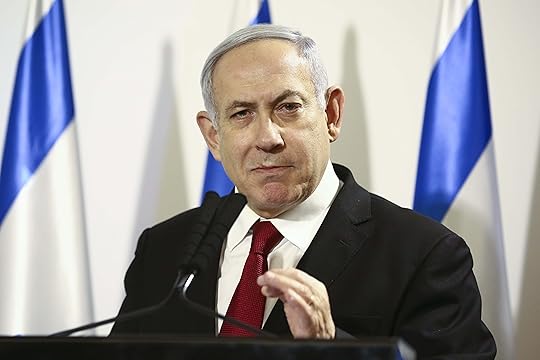
Benjamin Netanyahu's Sinister Plot to Hold On To Power
by

The Surprising Parallels Between Netanyahu and Trump
by Juan Cole

Israel’s Netanyahu Indicted on Corruption Charges
by
It is rumored that Donald Trump will announce his support for Netanyahu’s massive piece of grand larceny. Trump made waves of his own Sunday, addressing a Jewish audience and telling them that they are “not nice people” but that they will vote for him because they care about money above all else and will reject Elizabeth Warren’s plan to raise taxes. He also insisted that Jewish Americans must give Israel their blind support. He managed to hit all the highlights of anti-Semitism, from caricatures of Jews as money-grubbers with no thought for the public weal to inaccurate charges of dual loyalty.
Israel may well go to the polls again for a third time in a year this spring. The electorate is divided between the far-far-right Likud Party of Netanyahu and the center-right Blue and White coalition of Benny Gantz. So it keeps returning a hung parliament. Gantz refuses to form a government of national unity with Netanyahu. Actually, either of the two blocs could form a government if they allied with the largely Palestinian-Israeli Joint List, but the racist rules of Israeli politics do not permit allowing persons of Palestinian heritage into the cabinet.
If Netanyahu loses again, it is possible that his party will dump him or that his enemies will form a government without him, leaving him in the dragnet of the police.
I explained earlier two of the cases against him: In one case, Netanyahu allegedly accepted a couple hundred thousand dollars in bribes from an Australian businessmen in return for favorable treatment of his business and attempting to get him a U.S. visa.
In the other case, Netanyahu is alleged to have offered a deal to Arnon Mozes, the publisher of Israel’s biggest-circulation newspaper, Yedioth Ahronoth. Netanyahu supporter and shady casino billionaire Sheldon Adelson had begun a free pro-Netanyahu newspaper, Yisrael Ha-Yom, and it obviously was eating into the profits of the other newspapers in the country. (How this is not illegal as “dumping” baffles me.) Netanyahu allegedly told Mozes that he could persuade Adelson to reduce the publication run of Yisrael Ha-Yom, which would help his bottom line. In return, Mozes should report more favorably on Netanyahu.
This second case really is about destroying freedom of the press and entirely undermining what little is left of Israeli democracy.
Israel never had a claim on the Palestinian West Bank or the Gaza Strip. In 1967 Israel invaded these areas and occupied them even though the Palestinians took no role in the 1967 War. Nearly 3 million Palestinians now live in the West Bank under Israeli military control. Another 2 million live in the Gaza Strip, which is occupied via blockade. Violating international law, Israel long since annexed some of this Palestinian territory and added it to the Israeli district of Jerusalem, settling some 350,000 Israelis on this stolen Palestinian land. Israel has also sent 400,000 squatters to take property away from Palestinian families in what is left of the West Bank.
Now Netanyahu is brazenly planning to steal a quarter of all the land in the Palestinian West Bank, forever ending any chance of a Palestinian state.
The US Congress, which tacitly supports Israeli colonization efforts, has clung to a fig leaf of an imaginary peace process and a two-state solution for decades during which far right wing Israeli governments have energetically worked to forestall any such thing.

5 Dead, 8 Missing After New Zealand Volcano Eruption
WHAKATANE, New Zealand—A volcano off the New Zealand coast erupted Monday with a towering blast of ash and scalding steam as dozens of tourists were exploring the moon-like surface, killing five people and leaving eight others missing and feared dead, authorities said.
Helicopter crews landed on White Island despite the danger and helped rescue dozens of survivors, authorities said.
Hours after the disaster, the site was still considered too dangerous for rescuers to search for the missing. But aircraft flew over the island, and “no signs of life have been seen at any point,” Prime Minister Jacinda Ardern said.
The missing and injured included New Zealanders and tourists from the U.S., China, Australia, Britain and Malaysia, the prime minister said.
“My god,” Michael Schade tweeted as he posted video of the eruption. “My family and I had gotten off it 20 minutes before, were waiting at our boat about to leave when we saw it. Boat ride home tending to people our boat rescued was indescribable.”
His video showed a wall of ash and steam around White Island and a helicopter badly damaged and covered in ash. He said one woman was badly injured but seemed “strong” by the end.
The terrifying disaster immediately raised questions of why people were allowed to visit the island some 30 miles (50 kilometers) off mainland New Zealand after scientists had noted an uptick in volcanic activity in recent weeks. White Island is the tip of an undersea volcano.
Authorities said 47 people were on the island at the time. In addition to the dead and missing, 31 survivors were hospitalized and three others were released, officials said. Some of the victims were reported severely burned.
The eruption took place about 2 p.m. and consisted of two explosions in quick succession, the prime minister said. It sent a plume of steam and ash an estimated 12,000 feet (3,660 meters) into the air. One of the boats that returned from the island had half a meter (yard) of ash on it.
Some of the visitors were passengers from the Royal Caribbean cruise ship Ovation of the Seas.
“We will offer all possible assistance to our guests and local authorities. Please keep all those affected in your prayers,” the cruise line said.
The ship had left Sydney last week and had been scheduled to sail to the New Zealand capital of Wellington on Monday night, but Royal Caribbean said it would instead remain in port on neighboring North Island until more was learned about the situation.
The GeoNet agency, which monitors volcanoes and earthquakes in New Zealand, had raised the alert level on White Island on Nov. 18 from 1 to 2 on a scale where 5 represents a major eruption, noting an increase in sulfur dioxide gas, which originates from magma deep in the volcano. It also said that volcanic tremors had increased from weak to moderate strength.
Ardern said the focus remained on the search-and-rescue mission for now and questions about whether tourists should be visiting would be addressed later.
Brad Scott, a volcanologist with research group GNS Science, said the alert level on White Island was often raised and then later dropped again without any eruption. He said there hadn’t been any major problems with tourists visiting the island in the past, though there had been some close calls.
Scott said it was not for him to say whether the island was safe enough to host tourists immediately before Monday’s eruption.
After the disaster, GeoNet raised its alert level to 4, later dropping it to 3.
“In the scheme of things, for volcanic eruptions, it is not large,” said Ken Gledhill from GeoNet. “But if you were close to that, it is not good.”
White Island is New Zealand’s most active cone volcano. About 70% of the volcano lies under the sea.
Twelve people were killed on the island in 1914 when it was being mined for sulfur. Part of a crater wall collapsed and a landslide destroyed the miners’ village and the mine itself.
The remains of buildings from another mining enterprise in the 1920s are now a tourist attraction. The island became a private scenic reserve in 1953, and daily tours allow more than 10,000 people to visit every year.
The island is also known by the indigenous Maori name Whakaari.
___
Perry reported from Wellington, New Zealand.

Watchdog Report on Russia Probe Finds No Political Bias
WASHINGTON—The Justice Department’s internal watchdog will release a highly anticipated report Monday that is expected to reject President Donald Trump’s claims that the Russia investigation was illegitimate and tainted by political bias from FBI leaders. But it is also expected to document errors during the investigation that may animate Trump supporters.
The report, as described by people familiar with its findings, is expected to conclude there was an adequate basis for opening one of the most politically sensitive investigations in FBI history and one that Trump has denounced as a witch hunt. It began in secret during Trump’s 2016 presidential run and was ultimately taken over by special counsel Robert Mueller.
The report comes as Trump faces an impeachment inquiry in Congress centered on his efforts to press Ukraine to investigate a political rival, Democrat Joe Biden — a probe the president also claims is politically biased.
Related Articles
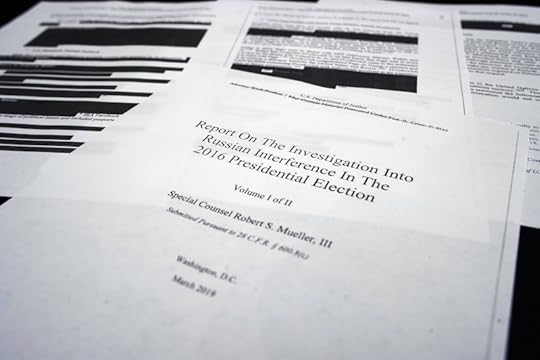
Five Critical Takeaways From the Mueller Report
by Bill Blum
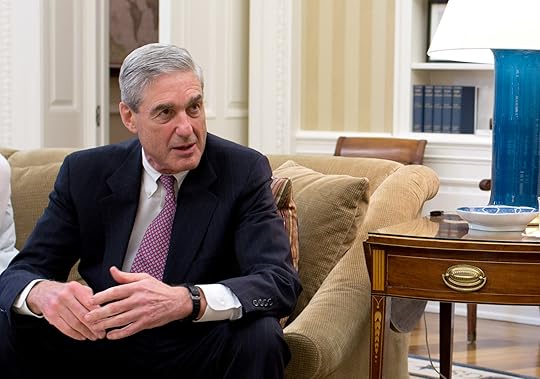
What's in the Mueller Report?
by
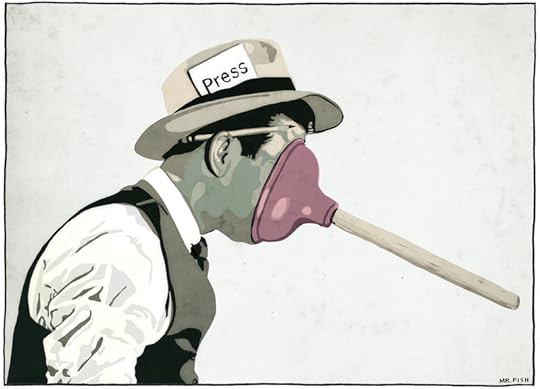
Mueller Report Ends a Shameful Period for the Press
by Chris Hedges
Still, the release of Inspector General Michael Horowitz’s review is unlikely to quell the partisan battles that have surrounded the Russia investigation for years. It’s also not the last word: A separate internal investigation continues, overseen by Trump’s attorney general, William Barr and led by a U.S. attorney, John Durham. That investigation is criminal in nature, and Republicans may look to it to uncover wrongdoing that the inspector general wasn’t examining.
Trump tweeted Sunday: “I.G. report out tomorrow. That will be the big story!”
He previously has said that he was awaiting Horowitz’s report but that Durham’s report may be even more important.
Horowitz’s report is expected to identify errors and misjudgments by some law enforcement officials, including by an FBI lawyer suspected of altering a document related to the surveillance of a former Trump campaign aide. Those findings probably will fuel arguments by Trump and his supporters that the investigation was flawed from the start.
But the report will not endorse some of the president’s theories on the investigation, including that it was a baseless “witch hunt” or that he was targeted by an Obama administration Justice Department desperate to see Republican Trump lose to Democrat Hillary Clinton in 2016.
It also is not expected to undo Mueller’s findings or call into question his conclusion that Russia interfered in that election in order to benefit the Trump campaign and that Russians had repeated contacts with Trump associates.
Some of the findings were described to The Associated Press on condition of anonymity by people who were not authorized to discuss a draft of the report before its release. The AP has not viewed a copy of the document.
It is unclear how Barr, a strong defender of Trump, will respond to Horowitz’s findings. He has told Congress that he believed “spying” on the Trump campaign did occur and has raised public questions about whether the counterintelligence investigation was done correctly.
The FBI opened its investigation in July 2016 after receiving information from an Australian diplomat that a Trump campaign adviser, George Papadopoulos, had been told before it was publicly known that Russia had dirt on the Clinton campaign in the form of thousands of stolen emails.
By that point, the Democratic National Committee had been hacked, an act that a private security firm — and ultimately U.S. intelligence agencies — attributed to Russia. Prosecutors allege that Papadopoulos learned about the stolen emails from a Maltese professor named Joseph Mifsud. Papadopoulous pleaded guilty to lying to the FBI about that interaction.
The investigation was taken over in May 2017 by Mueller, who charged six Trump associates with various crimes as well as 25 Russians accused of interfering in the election either through hacking or a social media disinformation campaign. Mueller did not find sufficient evidence to charge a criminal conspiracy between the Trump campaign and Russia.
He examined multiple episodes in which Trump sought to seize control of the investigation, including by firing James Comey as FBI director, but declined to decide on whether Trump had illegally obstructed justice.
The inspector general’s investigation began in early 2018. It focuses in part on the FBI’s surveillance of a former Trump campaign adviser, Carter Page. The FBI applied in the fall of 2016 for a warrant from the secretive Foreign Intelligence Surveillance Court to monitor Page’s communications, with officials expressing concern that he may have been targeted for recruitment by the Russian government.
Page was never charged and has denied any wrongdoing.
Sen. Lindsey Graham, chairman of the Senate Judiciary Committee, which is scheduled to hear testimony from Horowitz on Wednesday, said he expected the report would be “damning” about the process of obtaining the warrant.
“I’m looking for evidence of whether or not they manipulated the facts to get the warrant,” Graham, R-S.C., said on Fox News Channel’s “Sunday Morning Futures.”
The warrant was renewed several times, including during the Trump administration. Republicans have attacked the procedures because the application relied in part on information gathered by an ex-British intelligence operative, Christopher Steele, whose opposition research into the Trump campaign’s connections to Russia was funded by Democrats and the Clinton campaign.
In pursuing the warrant, the Justice Department referred to Steele as “reliable” from previous dealings with him. Though officials told the court that they suspected the research was aimed at discrediting the Trump campaign, they did not reveal that the work had been paid for by Democrats, according to documents released last year.
Steele’s research was compiled into a dossier that was provided to the FBI after it had already opened its investigation.
The report also examined the interactions that senior Justice Department lawyer Bruce Ohr had with Steele, whom he had met years earlier through a shared professional interest in countering Russian organized crime. Ohr passed along to the FBI information that he had received from Steele but did not alert his Justice Department bosses to those conversations.
Ohr has since been a regular target of Trump’s ire, in part because his wife worked as a contractor for Fusion GPS, the political research firm that hired Steele for the investigation.
This is the latest in a series of reports that Horowitz, a former federal prosecutor and an Obama appointee to the watchdog role, has released on FBI actions in politically charged investigations.
Last year, he criticized Comey for a news conference announcing the conclusion of the Clinton email investigation, and for then alerting Congress months later that the probe had been effectively reopened. In that report, too, Horowitz did not find that Comey’s actions had been guided by partisan bias.

The Great American Shakedown
The Democratic Party and its liberal supporters are perplexed. They presented hours of evidence of an impeachable offense, although they studiously avoided charging Donald Trump with impeachable offenses also carried out by Democratic presidents, including the continuation or expansion of presidential wars not declared by Congress, exercising line-item veto power, playing prosecutor, judge, jury and executioner to kill individuals, including U.S. citizens, anywhere on the planet, violating due process and misusing executive orders. Because civics is no longer taught in most American schools, they devoted a day to constitutional scholars who provided the Civics 101 case for impeachment. The liberal press, cheerleading the impeachment process, saturated the media landscape with live coverage, interminable analysis, constant character assassination of Trump and giddy speculation. And yet, it has made no difference. Public opinion remains largely unaffected.
Perhaps, supporters of impeachment argue, they failed to adopt the right technique. Perhaps journalists, by giving voice to opponents of impeachment—who do indeed live in a world not based in fact—created a false equivalency between truth and lies. Maybe, as Bill Grueskin, a professor at the Columbia University Journalism School, writes, impeachment advocates should spend $1 million to produce a kind of movie trailer for all those who did not sit through the hours of hearings, to “boil down the essentials of the film” and provide “a quick but intense insight into the characters, setting the scene with vivid imagery—to entice people to come back to the theatre a month later for the full movie.” Or perhaps they need to keep pounding away at Trump until his walls of support crumble.
The liberal class and the Democratic Party leadership have failed, even after their defeat in the 2016 presidential election, to understand that they, along with the traditional Republican elites, have squandered their credibility. No one believes them. And no one should.
They squandered their credibility by promising that the North American Free Trade Agreement (NAFTA) would, as claimed by President Bill Clinton, create 200,000 new, well-paying jobs per year; instead, several million jobs were lost. They squandered it by allowing corporations to move production overseas and hire foreign workers at daily wages that did not equal what a U.S. unionized worker made in an hour, a situation that obliterated the bargaining power of the American working class. They squandered it by allowing corporations to use the threat of “offshoring” production to destroy unions, suppress wages, extract draconian concessions and push millions of workers into the temp and gig economies, where there are no benefits or job security and pay is 60% or less of what a full-time employee in the regular economy receives. They squandered it by forcing working men and women to take two or three jobs to support a family, jacking up household debt to $13.95 trillion. They squandered it by redirecting wealth upward, so that during the Clinton administration alone 45 percent of all income growth went to the wealthiest 1%. They squandered it by wiping out small farmers in Mexico, driving some 3 million of them off their lands and forcing many to migrate in desperation to the United States, a human tide that saw the U.S. right wing and President Trump direct mounting rage toward immigrants. They squandered it by turning our great cities into urban wastelands. They squandered it by slashing welfare and social service programs. They squandered it by supporting endless, futile wars that have an overall price tag of between $5 trillion and $7 trillion. They squandered it by setting up a surveillance system to spy on every American and then lying about it. They squandered it by catering to the big banks and gutting financial regulations, precipitating the 2008 economic meltdown. They squandered it by looting the U.S. Treasury to bail out banks and financial firms guilty of massive financial crimes, ordering the Federal Reserve to hand over an estimated $29 trillion to the global financiers responsible for the crash. They squandered it by not using this staggering sum instead to provide free college tuition to every student or universal health care, repair our crumbling infrastructure, transition to clean energy, forgive student debt, raise wages, bail out underwater homeowners, form public banks to foster investments in our communities at low interest rates, provide a guaranteed minimum income and organize a massive jobs program for the unemployed and underemployed, whose ranks are at least double official statistics. They squandered it by cutting child assistance programs—most drastically during the Clinton administration—resulting in 16 million children going to bed hungry every night. They squandered it by leaving over half a million Americans homeless and on the streets on any given day. They squandered it by passing laws that keep students burdened by massive college loan debt that has climbed to $1.4 trillion, debt they cannot free themselves from even if they declare bankruptcy. They squandered it by militarizing police and building the world’s largest system of mass incarceration, one with 25% of the world’s prison population. They squandered it by revoking due process and habeas corpus. They squandered it by passing massive tax cuts for the rich and for corporations, many of which—such as Amazon—pay no federal income tax, ballooning the federal deficit, now at $779 billion and climbing. They squandered it by privatizing everything from intelligence gathering to public education to swell corporate bank accounts at taxpayer expense. They squandered it by permitting corporate money—an estimated $9.9 billion will be spent this presidential election cycle on political advertising—to buy politicians in a form of legalized bribery that sees corporate lobbyists write legislation and create laws. They squandered it by doing nothing to halt the looming ecocide.
The problem is not messaging. The problem is the messenger. The mortal wounds inflicted on our democratic institutions are bipartisan. The traditional Republican elites are as hated as the Democratic elites. Trump is vile, imbecilic, corrupt and incompetent. But for a largely white working class cast aside by austerity and neoliberalism, he at least taunts the elites who destroyed their communities and their lives.
The shakedown that Trump clumsily attempted to orchestrate against the president of Ukraine in the hope of discrediting Joe Biden, a potential rival in the 2020 presidential election, pales beside the shakedown orchestrated by the elites who rule over America’s working men and women. This shakedown took from those workers their hope and, more ominously, their hope for their children. It took from them security and a sense of place and dignity. It took from them a voice in how they were governed. It took from them their country and handed it to a cabal of global corporatists who intend to turn them into serfs. This shakedown plunged millions into despair. It led many to self-destructive opioid, alcohol, drug and gambling addictions. It led to increases in suicide, mass shootings and hate crimes. This shakedown led to bizarre conspiracy theories and fabrications peddled by a neofascist right wing, deceptions bolstered by the lies told by those tasked with keeping the society rooted in truth and verifiable fact. This shakedown led to the end of the rule of law and the destruction of democratic institutions that, if they had continued to function, could have prevented the rise to power of a demagogue such as Trump.
There is zero chance Trump will be removed from office in a trial in the Senate. The Democratic Party elites have admitted as much. They carried out, they argue, their civic and constitutional duty. But here again they lie. They picked out what was convenient to impeach Trump and left untouched the rotten system they helped create. The divisions among Americans will only widen. The hatreds will only grow. And tyranny will wrap its deadly tentacles around our throats.

December 8, 2019
All-Female Ticket? Warren Says America Is Ready
CHARLESTON, S.C.—Elizabeth Warren said Sunday she believes Americans are ready for a presidential ticket with two women at the top, rejecting concerns from some Democrats that a woman can’t beat President Donald Trump.
“Sure, why not?” the Democratic presidential candidate told The Associated Press in an interview ahead of a town hall campaign event in Charleston. “I think (voters) would support a lot of different combinations.”
Related Articles

Half of American Men Can’t Handle the Prospect of a Woman President
by Ilana Novick

Report: 13% of Americans Still Believe Men Are ‘Better Suited Emotionally’ for Politics
by Ilana Novick
In the aftermath of Hillary Clinton’s 2016 defeat, some Democrats have expressed hesitation about nominating another woman to take on Trump in 2020. But Warren argued that women notched historic wins during the 2018 midterms, suggesting voters are worried less about gender than the message candidates are offering.
Her comments come less than a week after California Sen. Kamala Harris abruptly dropped out of the race, prompting debate about whether a party that says it values diversity is shortchanging candidates of color and women. Other than Warren, the Democratic top tier is currently all male. They are also all white.
Warren has said she’d consider tapping Harris as a running mate. She also told the AP she would be “open” to asking former Vice President Joe Biden to reprise his old job.
“Look, it would be presumptuous of me to be talking about individuals, but I’m open to getting this right because that’s what we want to do,” Warren said. “We want to build a Democratic ticket and a stronger Democratic Party that’s ready to get out there and compete at the national level, at the state level, at the local level.”
Her openness to teaming with Biden is notable because the two candidates represent distinctly different visions of the Democratic Party’s future. Warren has embraced calls for systemic reforms to the nation’s economy and health care. Biden has urged more pragmatic approaches and has specifically rejected Warren’s $20 trillion plan to transition the U.S. to a single-payer health care system as unworkable.
Biden has the advantage in South Carolina, where he’s leading in the polls because of his deep ties to the black community. He told the AP in October that Warren “doesn’t affect my strategy, period” in the state.
But her trip to South Carolina on Sunday suggests she won’t cede the state to Biden. She has upped her efforts to appeal to black voters, especially women. She delivered a well-received speech at a historically black college in Atlanta last month and a group of more than 100 black female activists endorsed her candidacy.
In the interview and the town hall that followed, Warren went after her billionaire opponents, particularly former New York City Mayor Mike Bloomberg. She has decried his multimillion-dollar ad spending as a way to try to buy the election, especially considering his decision not to compete in early-voting states, including South Carolina.
“The problem with the billionaires is that there’s just no limit on how much they can spend. They can reach in their pockets and just spend and spend and spend,” Warren told the AP. “That means they get to buy a bigger share of democracy than anyone else, and that’s a real problem.”
But Warren said the problem extends to candidates willing to hold big-dollar fundraisers in lieu of relying on a small-dollar donor base, referring to recent criticism she levied against fellow Democratic hopeful Pete Buttigieg.
“If the only way we’re going to get a Democratic candidate is that you’ve either got to be a billionaire, or go suck up to the billionaires, then buckle up, because it means we’re going to have a government that just keeps working better for the billionaires and not for everyone else,” Warren said.
Regardless of who emerges from the crowded Democratic field, Warren said the party will have to find ways to attract Republicans who are disenchanted by Trump’s presidency.
“We’re going to need as many Democrats as we can to build up our turnout, and we’re also going to need some Republicans to help us, some Republican women, some Republican men, who are turned off by how Donald Trump behaves,” Warren said.
“I think we’ve got a path to victory, and I think the energy and enthusiasm of women is really what’s going to carry us across the finish line with a good margin.”
She said women will “not only help us win the White House but, just as has been happening, help us win up and down the ticket.”

Schumer: Federal Workers to Get 12 Weeks of Paid Parental Leave
NEW YORK—The Senate’s top Democrat said Sunday that congressional leaders have reached a “real breakthrough” deal to give 12 weeks of paid parental leave to millions of federal workers as part of the annual defense policy bill.
Sen. Charles Schumer said the agreement over the National Defense Authorization Act was reached late Friday night and a vote is expected later this week. The establishment of President Donald Trump’s proposed Space Force is also included in the bill.
Related Articles
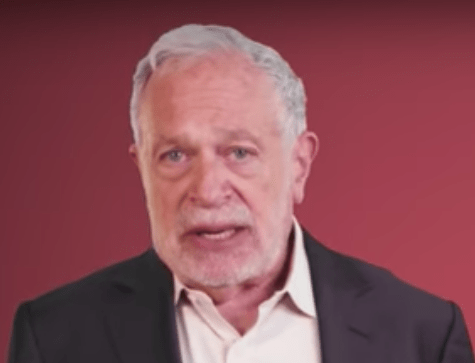
Robert Reich: Ignore the Socialist Scaremongering
by Robert Reich
Trump administration officials have said Space Force is urgently needed to preserve U.S. dominance in space. A proposal from the Pentagon released earlier this year suggested the service would have about 15,000 personnel and begin in 2020. Space Force would reside within the Air Force, similar to how the Marine Corps exists within the Navy.
The must-pass bill includes a provision that would allow more than 2 million federal government workers to take paid leave to care for a new baby or for an adopted child. Parental leave was a priority for high-ranking Democrats, including Schumer and House Speaker Nancy Pelosi.
The provision is a victory for federal workers, who would face benefit cuts under the Trump administration’s budget submission. Under the current federal law, civilian workers are eligible for 12 weeks of unpaid leave.
“It’s a real breakthrough for families,” Schumer said, adding that Democrats hope the move will encourage more private employers to offer similar parental leave benefits.
“Not only does it mean that federal employees will get what they’re entitled to, the federal government is a pacesetter,” Schumer added. “If you work for a private company, this means the pressure on your employer will be much greater to give you parental leave as well when the blessed event of a child comes around, or god forbid your child is really sick and needs serious care.”
Ivanka Trump, the president’s daughter and adviser, said Friday that such a provision would “mark a HUGE step forward towards making paid leave a reality for all Americans.”

Study Confirms Hurricanes Are Stronger, More Frequent, More Destructive Than Ever
Danish researchers have settled a problem of US disaster accounting, confirming that in the last century North America’s worst hurricanes have become three times more frequent – and significantly more destructive.
Such calculations sound as though they ought to be simple. They are not. In 1900, the entire population of the planet was about 1.6 billion people, most of whom lived in rural areas. By 2018, global population had reached 7.5 billion, and more than half of the world was concentrated in cities. In effect, any hurricane would threaten more victims, and there would be more, and more expensive, property to be destroyed.
Related Articles

Ralph Nader: Trump Should Be Impeached for His Climate Policy Alone
by
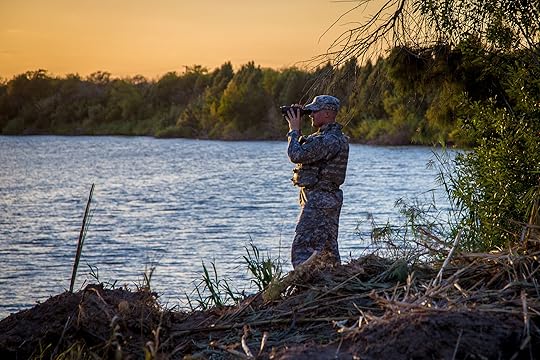
In Our Future Climate Dystopia, This Is What the Pentagon Will Do
by

ExxonMobil Hasn't Stopped Bankrolling Climate Deniers
by
So the damage from hurricanes would tend always to rise, and the count of destructive hurricanes would grow, because any violent windstorm would be more likely to slam into an urban area rather than sweep over a few farms.
Tropical cyclones, typhoons and hurricanes start at sea, as sea surface temperatures rise. With ever-increasing global temperatures, driven by profligate combustion of fossil fuels, more hurricanes would be expected, with higher windspeeds and ever-greater burdens of rain to bring disastrous floods as well as severe damage.
But it is harder to show that the climate crisis is intrinsically more dangerous, even though windstorm damage is on the rise. Researchers tend to use economic accounting to try to work out what a hurricane in, for example 1950, would cost if it swept in from the ocean today.
Hurricanes are the costliest natural disasters in the US. Scientists at the Niels Bohr Institute in Copenhagen set about making their comparisons in a new way. Rather than match financial losses on a case by case basis, they tried to calculate how large an area would have to be completely destroyed to account for a particular financial loss.
They extended this “area of total destruction” accounting back to 1900, to see what the new comparison approach would reveal.
And, they report in the Proceedings of the National Academy of Sciences, they found what they call “an emergent positive trend in damage, which we attribute to a detectable change in extreme storms due to global warming.” And they add: “The frequency of the most damaging hurricanes has increased at the rate of 350% per century.”

House Passes ‘Historic’ Bill to Restore and Expand Voting Rights
Just one Republican—Rep. Brian Fitzpatrick of Pennsylvania—joined a united House Democratic caucus on Friday to pass what rights groups hailed as “historic” legislation to restore and expand voter protections that were gutted by the Supreme Court in 2013.
Lisa Gilbert, vice president of legislative affairs for Public Citizen, said passage of the Voting Rights Advancement Act (H.R. 4) is a “critical step” in combating Republican voter suppression efforts that have proliferated in the six years since the Supreme Court’s infamous decision in Shelby County v. Holder.
Related Articles
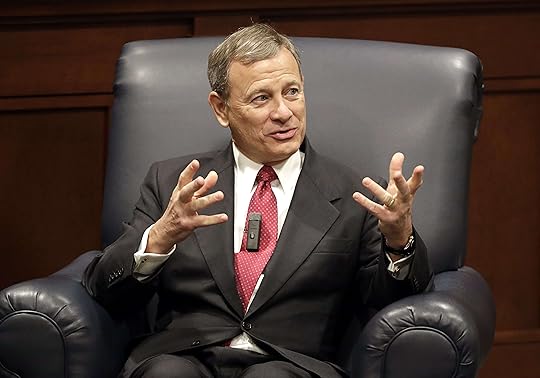
John Roberts' Dark Legacy of Voter Suppression
by Bill Blum
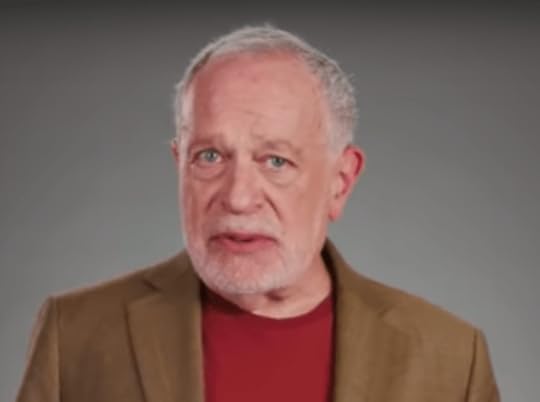
Robert Reich: Republicans Have a Dangerous New Scare Tactic
by Robert Reich

Surprising Ways Voter Suppression Hurts Women
by
“Numerous state legislatures have undertaken targeted and deliberate steps to limit or impede the right to vote for communities of color, students, the elderly, and people with disabilities,” said Gilbert. “Americans who are eligible to vote but are denied that right due to fabricated or illegal barriers are being deprived of the full privilege of our democracy.”
BREAKING: The House just passed #HR4, one of the most important bills to emerge during this Congress. As voter suppression continues to spread across the US, this bill would breathe life back into the Voting Rights Act. A win for the people & a win for democracy! #RestoreTheVote pic.twitter.com/TR14b3ltxQ
— Kristen Clarke (@KristenClarkeJD) December 6, 2019
BREAKING: @RepBrianFitz is the one and only House Republican that believes in voting rights. https://t.co/37aqHMYIMO
— Public Citizen (@Public_Citizen) December 6, 2019
“If we want a true democracy, we must protect the right to vote for all,” said Rep. Pramila Jayapal (D-Wash.), co-chair of the Congressional Progressive Caucus. “The Voting Rights Advancement Act is critical to getting there.”
The legislation now heads to the Senate, which is controlled by Republicans. Senate Majority Leader Mitch McConnell (R-Ky.) has refused to allow a vote on Democrats’ For the People Act (H.R. 1), to which the Voting Rights Advancement Act was previously attached.
“To Majority Leader McConnell, we ask: why are you afraid of all Americans having their full right to vote?” Sylvia Albert, director of voting and elections at Common Cause, said in a statement.
As Ari Berman of Mother Jones reported, H.R. 4—sponsored by Rep. Terri Sewell (D-Ala.)—would “initially cover 11 states: nine in the South, plus California and New York, which have more recently been found to discriminate against Latinos and Asian Americans.”
“The bill would also require all states to get federal approval for election changes that are known to disproportionately affect voters of color, such as strict voter ID laws, tighter voter registration requirements, and polling place closures in areas with large numbers of minority voters,” Berman noted.
Vanita Gupta, president and CEO of The Leadership Conference on Civil and Human Rights, applauded the House for passing H.R. 4 and demanded that McConnell bring the bill up for a vote in the Senate as soon as possible.
“The passage of H.R. 4 in the House of Representatives today brings us one step closer to restoring the Voting Rights Act and undoing the tremendous damage of Shelby,” Gupta said in a statement. “The VRAA is too important—and the right to vote is too fundamental—to end up buried in the McConnell legislative graveyard.”

When the Voiceless Speak
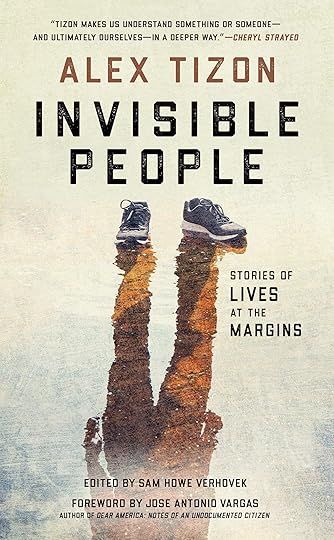 “Invisible People: Stories of Lives at the Margins”
“Invisible People: Stories of Lives at the Margins”
A book by Alex Tizon, edited by Sam Howe Verhovek
The ashes filled a black plastic box about the size of a toaster. It weighed three and a half pounds. I put it in a canvas tote bag and packed it in my suitcase this past July for the transpacific flight to Manila. From there I would travel by car to a rural village. When I arrived, I would hand over all that was left of the woman who had spent 56 years as a slave in my family’s household.
This is how Alex Tizon starts his deeply personal essay, “My Family’s Slave.” The article ran in The Atlantic after his sudden death in 2017, and is the centerpiece of a collection of Tizon’s works called “Invisible People: Stories of Lives at the Margins.” He was hardly a household name. Tizon was one of three Seattle Times reporters who won a Pulitzer Prize in 1997 for “their investigation of widespread corruption and inequities in the federally-sponsored housing program for Native Americans, which inspired much-needed reforms.” Despite this towering professional achievement, Sam Howe Verhovek, a friend and colleague of Tizon when he worked at the Los Angeles Times, thinks he deserves more, and has edited this collection of Tizon’s stories and articles. Through a diverse catalog, Verhovek showcases Tizon’s unique gift for giving voice to those invisible people whom the world has chosen to ignore.
Tizon brings a wide breadth of subjects to life, from a native woman at the edges of civilization to a man in search of UFOs, from a teenage gang member in prison for murder to a Khmer Rouge survivor facing lifelong trauma. But Tizon was no ordinary reporter: In every story, Tizon lifts the voice of his subject with an eloquence and dignity that reflect a deep human respect for each of them.
After the tragic events that unfolded on the morning of Sept. 11, 2001, Tizon and Seattle Times photographer Alan Berner went on a road trip across America, searching for the responses of ordinary Americans to the terrorist attacks; those interviews eventually became the “Crossing America” series. Many of the stories captured in “Crossing America” are reprinted in this book.
On their travels, Tizon and Berner met Yazzie, a Navajo woman who stands “small and imperial, like a miniature queen, 58 years old but with the demeanor of an ancient . . . she speaks no English and has no desire to learn. Yazzie has never left the reservation.” One would assume that a person so distant from a metropolis like New York would not have much to say about 9/11, and yet Tizon is able to mine this:
Yazzie said she heard about what happened, holding up two fingers of her left hand, and then crashing into them with the index finger of her right. . . . She said she felt bad for the children.
What children, we ask. The children who died, the children whose parents were killed? The children of the terrorists? The children on the reservation who now fear airplanes?
“The children,” she said, and looked away.
Along with Tizon’s efficient, state-the-facts reporting, almost every story in “Invisible People” has this moment. A moment where the seemingly straightforward reporting is held up to the light and a kind of existential expressionism is revealed. Suddenly, the news story is no longer just a news story. It stops you in your tracks. It asks deep questions of you. It implicates you and, as we find out, it’s because Tizon let his guard down and implicated himself.
A mail-order bride from the Philippines is murdered by her new husband. It’s a story tackling hot button issues like immigration, domestic abuse, the internet, globalism and even gun control. Tizon touches on all of them at one point or another, but in the midst of it all finds a moment where all of that becomes almost irrelevant:
In the minds of her family, Susana left the island in white and returned in white. They videotaped her memorial service and entombment. They were eerily similar to her wedding and reception—the same church, same crowd, with her parents looking equally lost in the proceedings, and Susana dressed in elegant white, the center of it all.
At the end of the memorial service, only a pane of glass separated her from the people who stood in a long, sweltering line to get one last look. A parent who attended the service spoke of her young child’s reaction: “How come she’s not sweating?” the child asked.
The mother said, “She’s in a cold place now.”
Everyone here knows what she meant. In Cataingan on most days, cold is a thing to wish for. Cold happens in places far from here, better than here.
Susana made it to one of those places, at least for a short time. So many others want a taste of that other, dreamed-of life—risks be damned. The vast majority won’t get past just thinking about it; then there are some who’ll take their chances, and a few who’ll find a cold unlike any other.
Each article is prefaced with a short introduction by a colleague or editor associated with the following story. Some of Tizon’s colleagues include an intimate anecdote about working with Tizon, giving us a sense of the man behind the articles. Nearly all of them relate what they admired most about Tizon as a journalist and as a writer. Before the story of Susana, a colleague from the Los Angeles Times, Terry McDermott, offers a way to read Tizon :
The piece is ambitious and concerns issues close to Alex’s heart—his ethnicity, the utter poverty of his home, the effect of that poverty and dreams of what might erase it, the complicated geography of desire. None of this is announced. The prose is unaffected, almost casual; he doesn’t say what he’s about but lets his detailed and careful reporting carry the load.
More often than not, however, the introductions exposed nuggets of texts that I would rather have discovered as a surprise:
One of the most difficult challenges for any writer is creating an ending that is poignant but not heavy-handed or—gasp—syrupy. . . . The last words of the piece strike a perfect note. . . . What a powerful walk-off line from a master narrative writer.
And yes, the introduction includes this final line. Spoiler alert anyone? While the prefaces were well-written and deeply felt, for most of the stories, I would have much preferred encountering Tizon on my own first.
Still, the introductions never completely steal the thunder from Tizon’s immersive portraits. Like a seasoned detective, Tizon surfaces seemingly mundane details of a person that prove to be a key to unlocking their character. Like a literary tuning fork, they are at once small but resonant. For the long-shot presidential candidate Michael Gravel who ran unsuccessfully for the Republican nomination in 2007, Tizon’s eye for detail at a hotel restaurant captures both Gravel’s hopes and his chances:
He wears the obligatory uniform of male presidential hopefuls, dark suit and tie, and looks top to bottom like a decent enough fellow, with his thinning white hair and rimless spectacles. The hostess glances at his shoes: black strap-on Velcro walkers.
She sighs: “This way,” she says.
Other times, a perfectly phrased image becomes the cornerstone of the story:
Shirly-Ann pads around the wall to the edge of her property and places a foot in the ditch, her fuzzy black house slipper set daintily in the dirt.
“That’s Canada,” she says, her words weighted with the notion that her foot is now subject to the rules of a different nation.
Tizon arrived at these details not simply through keen observation, but by how he questioned and approached his subjects. Almost every single one of his editors noted how Tizon listened to his subjects with an unmatched empathy. It is evident in his writing that he cared and respected every person he spoke with. It is evident in the way he deftly allowed his voice to recede to the background in order for his subjects’ voices to ring louder, truer. The result is writing that is simple and honest, writing that seems to come from the subjects themselves. Without sounding too trite, Tizon became a vessel through which these unheard voices could speak. The best example of this is when Tizon turns the narrative inward in “My Family’s Slave.” What begins as a personal confession becomes a vivid portrait of a woman whose story could be told only by Tizon. As his wife would later say, it was the story he was born to write:
We called her Lola [grandmother in Tagalog]. . . . She was 4 foot 11, with mocha-brown skin and almond eyes that I can still see looking into mine—my first memory. She was 18 years old when my grandfather gave her to my mother as a gift, and when my family moved to the United States, we brought her with us. No other word but slave encompassed the life she lived. Her days began before everyone else woke and ended after we went to bed. She prepared three meals a day, cleaned the house, waited on my parents, and took care of my four siblings and me. My parents never paid her, and they scolded her constantly. She wasn’t kept in leg irons, but she might as well have been. So many nights, on my way to the bathroom, I’d spot her sleeping in a corner, slumped against a mound of laundry, her fingers clutching a garment she was in the middle of folding.
As Tizon grew up, he and his siblings started to awaken to the reality of who Lola really was. His brother Arthur was the first to bring up the word “slave” and why it was appropriate:
Wasn’t paid. Toiled every day. Was tongue-lashed for talking back. Wore hand-me-downs. Ate scraps and leftovers by herself in the kitchen. Rarely left the house. Had no friends or hobbies outside the family. Had no private quarters. (Her designated place to sleep in each house we lived in was always whatever was left—a couch or storage area or corner in my sister’s bedroom.)
As with all his stories, Tizon is at his most eloquent in the quietest moments:
One day while Lola and I were putting away groceries, I just blurted out: “Lola, have you ever been romantic with anyone?” She smiled, and then she told me the story of the only time she’d come close. She was about 15, and there was a handsome boy named Pedro from a nearby farm. For several months, they harvested rice together side by side. One time, she dropped her bolo—a cutting implement—and he quickly picked it up and handed it to her. “I liked him,” she said.
Silence.
“And?”
“Then he moved away,” she said.
“And?”
“That’s all,” she said.
“Lola, have you ever had sex?” I found myself saying.
“No,” she said.
When his parents passed, Tizon brought Lola to live with own family, not to resume her normal duties, but to become a real grandma to his children, with all the benefits and none of the work. He got her the medical attention she never received, and insisted that she not lift a finger in the house—something she had tremendous difficulty doing. When Lola passes away, Tizon remembers “looking at the medics standing above this brown woman no bigger than a child and thinking that they had no idea of the life she had lived. She’d had none of the self-serving ambition that drives most of us, and her willingness to give up everything for the people around her won her our love and utter loyalty.”
Tizon’s searing insight into Lola’s history and her years of toil is interwoven with a chronicle of his trip from bustling Manila to a small village, to bring her remains back to her hometown. It’s a simple device, perhaps not even a wholly original one, but it works in a powerfully emotional way; the farther from the city we travel, the more we find out about Lola and the closer we are to saying a final goodbye.
Toward the end, Tizon did all he could to make up for the life Lola endured, but I wonder if he sensed that telling her truth to the world was the best way he could set her free. Perhaps his life’s work of giving voice to those who had been cast aside was fueled by his desire to give voice to this invisible person in his own life. “My Family’s Slave” would be published only after Tizon’s death but even without that context, the story has a finality to it, a feeling that it is a completion of a lifelong task.
The string of Tizon’s short articles that make up “Invisible People” can have a meandering, almost aimless feeling, but together they form a touching and illuminating retrospective. Together they exemplify what his colleagues admired most in his work: an intimacy and empathy with his subjects that permeated every word he wrote. The love and respect Tizon’s colleagues had for him is perhaps the clearest throughline in the collection, which makes “Invisible People” tinged with sadness. Many of the glowing accolades that preface each story read less as an introduction and more of a eulogy:
Being with Alex was a first line of a renga, an invitation, a beckoning to both go deeper and laugh at yourself. . . . Seemingly out of nowhere, after a long night with many friends, he told me about having done and experienced about all that he needed to. He said he was tired and if the end was near, he could handle that. . . . I tried to comprehend what he was telling me. He watched as my face contorted and then he laughed.
Tizon may very well have been one of those invisible people himself, a startlingly poetic writer hidden behind a beat reporter. Although he won a Pulitzer and a National Magazine Award, one feels that his writing may have never been fully appreciated in the way it should have been.
“Invisible People” is, in part, an effort to correct that.

Chris Hedges's Blog
- Chris Hedges's profile
- 1921 followers



